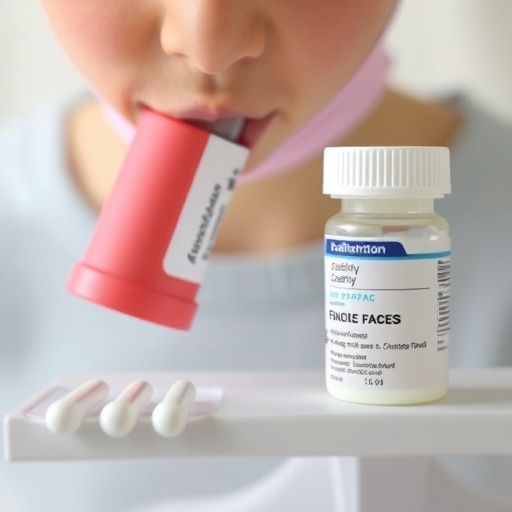When most living creatures get hurt, they can self-heal and recover from the injury. But, when damage occurs to inanimate objects, they don't have that same ability and typically either lose functionality or have their useful lifecycle reduced. Researchers at the Beckman Institute for Advanced Science and Technology are working to change that.
For more than 15 years, Jeff Moore, a professor of chemistry, Nancy Sottos, a professor of materials science and engineering, and Scott White, a professor of aerospace engineering, have been collaborating in the Autonomous Materials Systems Group. Their work focuses on creating synthetic materials that can react to their environment, recover from damage, and even self-destruct once their usefulness has come to an end.
The trio of Beckman researchers are pioneers in what is now a dynamic and growing field. Their work on self-healing polymers was first presented in the journal Nature more than a decade-and-a-half ago. Prior to that, there had been just a few papers published on the subject of autonomous polymers. In the years since, research in the field has exploded, with hundreds of papers published.
Now, in a sweeping perspective article published this month in the journal Nature, the researchers, along with Beckman Postdoctoral Fellows Jason Patrick and Maxwell Robb, review the state-of-the-art autonomous polymers and lay out future directions for the field.
"What we've tried to capture for the first time is a vision of polymers as multifunctional entities that can manage their well-being," Moore said.
The article is an overview of how their work has evolved from the development of self-healing polymers to a concentration on "life cycle control of polymers" — what he called "the healthy aging of materials." He described the autonomous function of materials this way: "Live long, be fit, die fast, and leave no mess behind. … We want the materials to live as long as they can in a healthy state and, when the time comes, be able to trigger the inevitable from a functional state to recoverable materials resources."
In the paper, the researchers identified five landscape-altering developments: self-protection, self-reporting, self-healing, regeneration, and controlled degradation.
Much of their work revolves around microcapsules, which are small, fluid-filled spheres that can be integrated into various material systems. The capsules contain a healing agent that is released automatically when exposed to a specific environmental change, such as physical damage or excessive temperature.
"You have capsules that remain stable in the material until the environment causes a stress that causes them to rupture," explained Sottos. "A lot of different external stimuli can open up the capsules. You can have a thermal trigger, a mechanical trigger, and we've worked a lot on chemical triggers. They open up, release their contents, and the science is in what comes out and reacts."
By developing new chemistries and ways to integrate microcapsules over the years, the researchers have created polymers that can do everything from re-filling minor damage in paints and coatings (self-protecting), changing color when undergoing stress (self-reporting), and re-bonding cracks or restoring electrical conductivity (self-healing).
The AMS Group also developed a way to efficiently fabricate vascular networks within polymers. These networks, which can include multiple channels that run throughout a material, are able to deliver healing agents multiple times, change thermal or magnetic properties, and facilitate other useful chemical interactions in a material.
A major development in their self-healing work focuses on repairing large-scale damage through the process of regeneration.
"Ballistic impacts, drilling holes in sheets of plastic, and these sorts of things, where a significant mass is lost … traditional self-healing has no way of dealing with that problem at all," White said. "The materials that would be used to heal that hole would simply fall out, bleed out under gravity."
So White and his collaborators came up with a two-channel healing system. When damage occurs on a large scale, a gel-like substance fills the space and builds upon itself, keeping the healing agents in place until they harden.
Their most recent work is concerned with how to deal with material systems when they have reached the end of their useful life. This work involves making materials that can self-destruct when a specific environmental signal is given (triggered transience). The researchers believe that triggers such as high temperature, water, ultraviolet light, and many others may one day be used to make obsolete devices degrade quickly so that they can be reused or recycled, thus reducing electronic waste and boosting sustainability.
Autonomous polymers are beginning to make their way into the commercial sector. Commercialization efforts have produced materials such as wear-resistant mobile device cases and automotive paints that can self-repair minor scratches. And more self-healing products are slowly coming to market including a microcapsule-based powder coating produced by the Champaign-based start-up company Autonomic Materials Inc.
While the practical application of many of these techniques still face challenges, Moore, Sottos, White, and their colleagues continue to work toward the creation of smart materials that can function independently, self-heal, and disintegrate once they are no longer useful, offering the eventual promise of safer, more efficient, and longer-lasting products that require fewer resources and produce less waste.
###
This research was funded by the Air Force Office of Scientific Research through the National Center of Excellence in Self-healing, Regeneration, and Structural Remodeling; the National Science Foundation (DMR 1307354); Defense Advanced Research Projects Agency (DARPA,FA8650-15-C-7522); and the BP International Center for Advanced Materials (ICAM).
Media Contact
Maeve Reilly
[email protected]
217-244-7316
@BeckmanInst
http://www.beckman.illinois.edu/
############
Story Source: Materials provided by Scienmag




